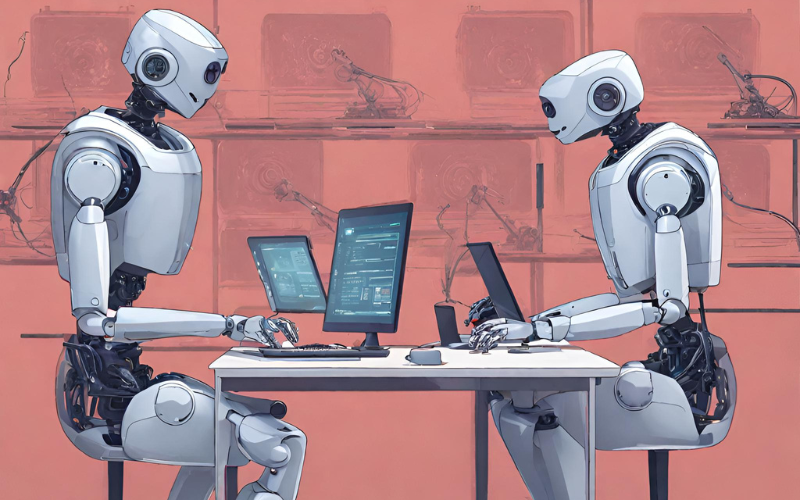In a recently published blog about the 2022 EDUCAUSE Horizon Report, I noted that the report’s experts had identified six technologies and practices that will have a significant impact on teaching and learning. Two of those technologies, AI for Learning Analytics and AI for Learning Tools, incorporate the utilization of Artificial Intelligence technology.
Over the years, I have written about Artificial Intelligence many times. While looking for a specific blog article that I wrote and published about using AI for higher ed data analytics, my search pulled up 62 blog articles that I have written about AI. The article that I was looking for, Data Analytics Applications for Student Retention – Traditional Techniques vs. Machine Learning, referenced a 2011 Gates Foundation grant designed to examine online student retention at six institutions, one of which was the American Public University System (APUS). Our APUS VP of Data Analytics, Dr. Phil Ice, served as the Primary Investigator for that research project. I interviewed Dr. Ice for that article and his responses provide alignment and additional insight to the AI for Learning Analytics section of the 2022 EDUCAUSE Horizons report.
The EDUCAUSE Horizons authors write that the emergence of AI-enabled practices in higher education has been facilitated by several recent shifts. The first of these shifts is that AI technologies and capabilities have changed significantly and will continue to evolve and improve. In my Feb 2020 article, Artificial Intelligence is Everywhere, Will You Be Prepared?, I wrote about a special issue of Fortune magazine that featured an article about the quest for human level AI (I also included links to five AI-related book reviews that I had written up to that time). The very nature of pursuing the goal of human equivalency or superiority will ensure that AI capabilities increase every year.
The COVID-19 pivot to online modes of learning and working at many of our institutions of higher education facilitated the second shift referenced by the authors. University and college leaders were introduced to “new online and cloud-based applications and platforms that harness their own machine and deep learning tools to analyze and generate insights from the data they collect.” As more course assignments and learning assessments are digitized and stored online with other institutional functions and services, the data stored by institutions will increase. The greater amounts of data stored will require AI technologies for organizing and analyzing the data to create adaptive and personalized education experiences for all students.
The EDUCAUSE Horizons authors correctly note that in order to successfully implement and utilize AI technologies and capabilities, institutions must break up the data silos that exist in departments and functional units that have their own systems and practices for collecting, storing, and using data. When APUS and five other schools participated in Phase I of the Gates-funded Predictive Analytics Reporting (PAR) Framework research, one of the hardest tasks was developing the data definitions and framework for anonymizing and reporting student data from the six pioneer institutions. A community data cookbook had to be created in order that all categories of student data uploaded from each institution would match. Incongruent data across institutions would create inaccurate results. As Dr. Ice pointed out in my interview, a neural network analysis can be messy because it predicts results that are not necessarily intuitive nor is there a documented algorithm determining how the results were derived. Carefully defining and aligning the dataset before beginning an AI analysis is important to reduce the chances of errors due to misclassified data. A data cookbook must be established for institutions to successfully analyze their multi department data. In order to avoid classification and definitional errors, ownership of the data cookbook at APUS was established outside of the IT department.
AI for Learning Tools was established as a separate category by the report’s experts primarily because AI is used for so many functions beyond data analysis. AI is used in social media platforms to learn our behaviors and preferences in order to populate our content feeds, suggest friends and products, and provide us with a personalized experience. Facial recognition is used by our phones to access our apps and allows us access to secured facilities. It also allows law enforcement personnel the ability to quickly locate persons of interest. AI powers natural language processing that enables translations of one language to another.
The EDUCAUSE Horizons authors note that many of the current AI-powered experiences related to college students utilize the devices and technologies that they have brought with them to campus. Students might ask Amazon’s Alexa for help on a history question or connect with other students based on social media feeds. A campus security app installed on their phone might allow instant location tracking in the event of an assault, robbery, or other emergency.
There are several key areas that the Horizon experts highlighted where institutions may need to focus their attention to make AI more relevant for teaching and learning. Virtual writing assistants were cited for their ability to provide students with real time feedback on the quality of their writing as well as the relevance of it to the professor’s instructions. AI tools can also be utilized to provide customized learning experiences and pathways for students, adjusting curricula, course materials, and assessments based on each student’s academic performance, needs, and preferences. As these tools become more automated, instructors can focus more of their time on higher order tasks or devoting time to students in need of additional support.
The utilization of extended reality technologies – virtual, augmented, and mixed reality – can be integrated with AI to create more realistic environments and experiences and lead to improved learning outcomes. Student practicum experiences can be supplemented or enhanced with intelligent and responsive simulations.
The EDUCAUSE Horizon authors noted that panelists scored the AI for Learning Tools area lowest in terms of “instructor and student receptiveness” to adopting the practice. They note that stakeholder buy-in and support may be a significant challenge and/or barrier for those seeking to integrate more AI-powered tools and technologies into their institution’s learning strategy.
From my perspective, the real question is not “if” a college or university will implement AI-related tools, but “when” they will implement AI-related tools for analytics and learning. The path forward will not be easy. The coordination and organization of data utilized for AI analytics is a project that is normally measured in years, not months. The utilization of AI technology for classroom learning requires faculty champions, pilots, transparency about the project, and lots of training. Ethics policies regarding the utilization of student and faculty data will have to be developed and appropriate education and signoff will be required by all parties.
The panelists were correct to score AI lowest in terms of instructor and student receptiveness toward adopting the practice. At the same time, those institutions that follow a rigorous path of implementation that includes transparency on data utilization as well as an ethics guideline will be successful. The risk is no longer in the quality of the technology. The risk is in adoption and implementation. I am confident that those institutions that can do this first will be rewarded.











